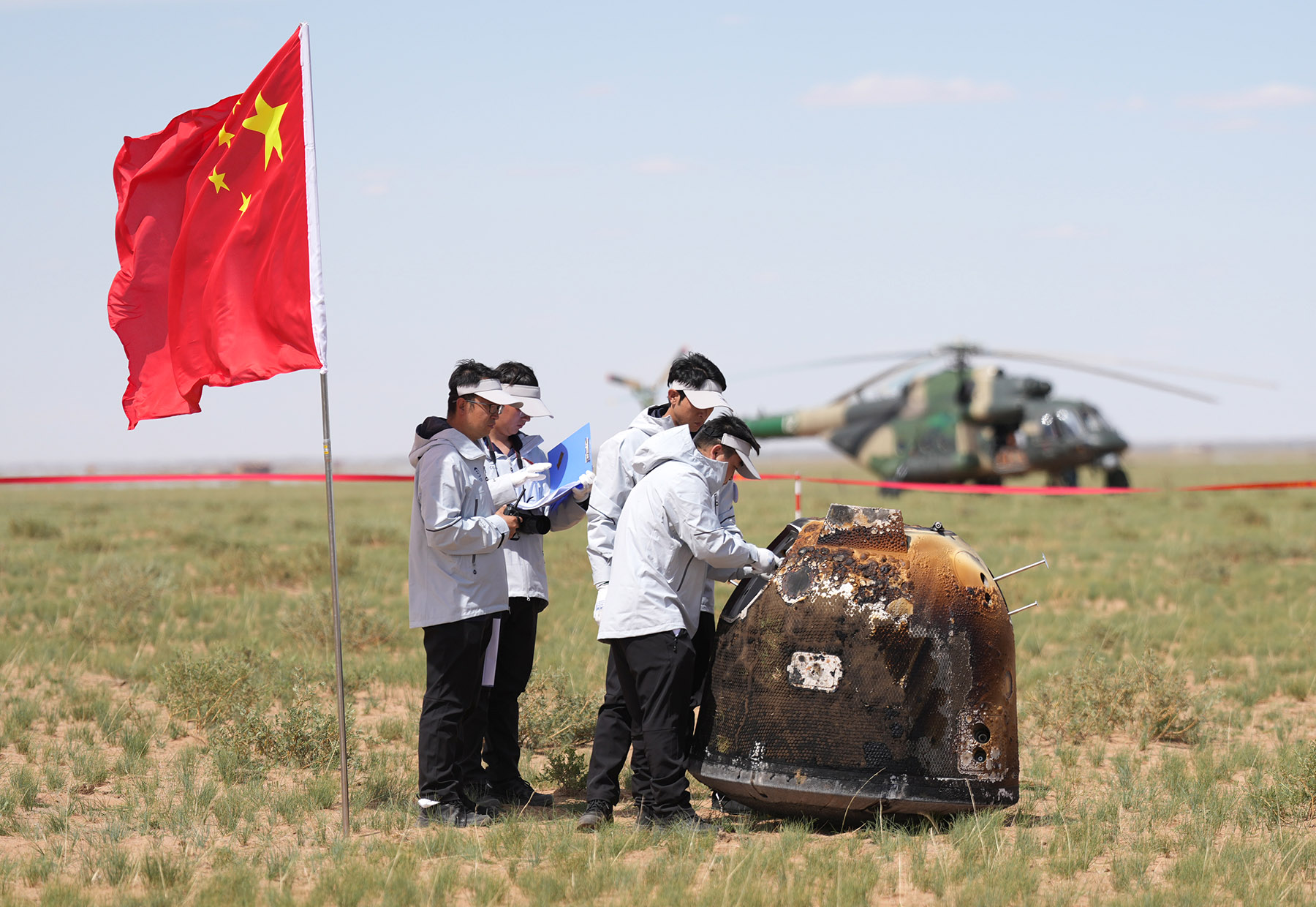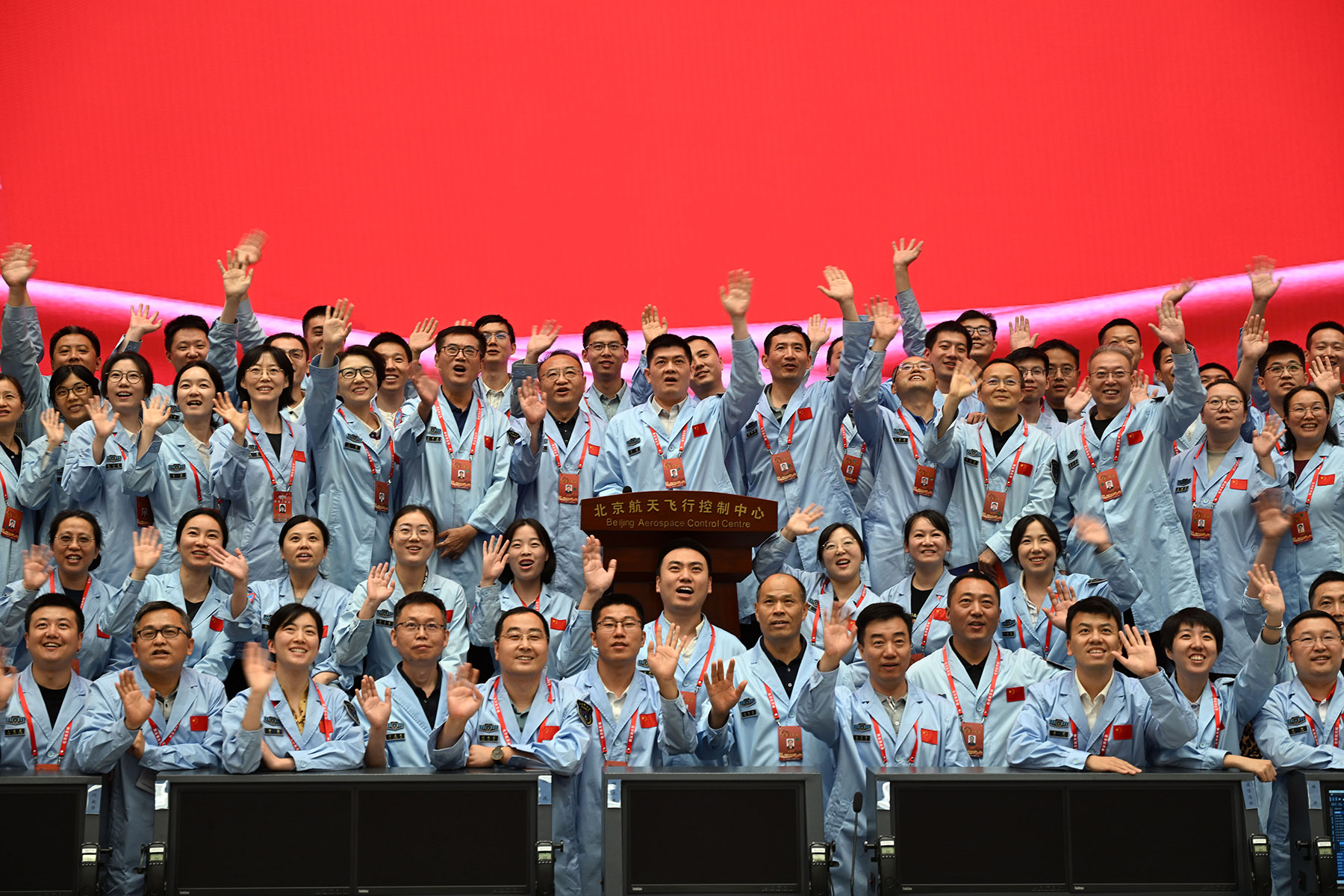President lauds Chang’e 6’s landmark in bringing samples of moon’s far side

President Xi Jinping sent a congratulatory message on June 25 on the success of the Chang’e 6 mission, which for the first time brought scientifically precious samples from the moon’s far side back to Earth.
On behalf of the Communist Party of China Central Committee, the State Council (China’s Cabinet) and the Central Military Commission, Xi, who is also general secretary of the CPC Central Committee and chairman of the CMC, extended warm congratulations and sincere greetings to the Chang’e 6 mission headquarters and all those who participated in the historic mission.
The president noted that the Chang’e 6 probe realized the world’s first sample-return endeavor from the lunar far side, marking a new milestone in China’s effort to become a global power in the space industry as well as in science and technology.
“Over the past 20 years, all comrades taking part in lunar exploration programs have been upholding the spirit of the cause, continuing to climb the peak of science and technology. You have made world-class achievements and established a high-quality, efficient path for exploring the moon,” Xi said.
“(You shall) march toward building the country into a major power in space, achieving new feats in exploring the universe and benefiting humanity, and making new contributions to Chinese modernization and national rejuvenation,” Xi said, also encouraging the mission’s participants to continue strengthening international cooperation.
Carrying the unique lunar samples, the reentry capsule of the Chang’e 6 robotic probe touched down at 2:07 pm on June 25 on its preset landing site in Siziwang Banner in the Inner Mongolia autonomous region, successfully completing a 53-day voyage.
The reentry and landing processes started at around 1:20 pm after the mission controllers at the Beijing Aerospace Control Center uploaded high-accuracy navigation data to the orbiter-reentry capsule combination.

The capsule separated from the orbiter about 5,000 kilometers above the southern Atlantic Ocean. It entered the Earth’s atmosphere at around 1:41 pm.
When the craft was about 10 km above ground, it released its parachutes and landed smoothly on the sandy grassland.
Shortly after touchdown, recovery personnel sent from the Jiuquan Satellite Launch Center arrived at the landing site in helicopters and off-road vehicles. On June 26, the capsule was transported by an airplane to Beijing, where it would be opened by experts at the China Academy of Space Technology.
The samples will be weighed before being delivered, in due course, to the National Astronomical Observatories, a subsidiary of the Chinese Academy of Sciences, according to the China National Space Administration.
The Chang’e 6 probe, representing the world’s first attempt to bring samples from the far side of the moon, was launched by a Long March 5 heavy-lift carrier rocket on May 3 from the Wenchang Space Launch Center in Hainan province.
The 8.35-ton spacecraft was designed and built by the China Academy of Space Technology, a subsidiary of China Aerospace Science and Technology Corp.
After a host of sophisticated steps, the lander touched down at the South Pole-Aitken Basin, one of the largest-known impact craters in the solar system, on the morning of June 2.
The landing marked the second time a spacecraft ever arrived on the lunar far side.
The vast region had never been reached by any spacecraft until January 2019, when the Chang’e 4 probe landed in the South Pole-Aitken Basin.
The landscapes and physical characteristics of the lunar far side, which permanently faces away from Earth, are very different from those of the near side, which is visible from Earth, according to scientists. The new samples are expected to offer researchers around the globe useful clues to answer questions related to the moon, and will likely bring a range of invaluable scientific payoffs, they said.


